Gretchen Krueger
A Hazard Analysis Framework for Code Synthesis Large Language Models
Jul 25, 2022


Abstract:Codex, a large language model (LLM) trained on a variety of codebases, exceeds the previous state of the art in its capacity to synthesize and generate code. Although Codex provides a plethora of benefits, models that may generate code on such scale have significant limitations, alignment problems, the potential to be misused, and the possibility to increase the rate of progress in technical fields that may themselves have destabilizing impacts or have misuse potential. Yet such safety impacts are not yet known or remain to be explored. In this paper, we outline a hazard analysis framework constructed at OpenAI to uncover hazards or safety risks that the deployment of models like Codex may impose technically, socially, politically, and economically. The analysis is informed by a novel evaluation framework that determines the capacity of advanced code generation techniques against the complexity and expressivity of specification prompts, and their capability to understand and execute them relative to human ability.
Text and Code Embeddings by Contrastive Pre-Training
Jan 24, 2022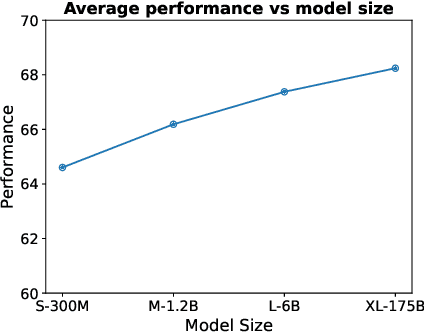
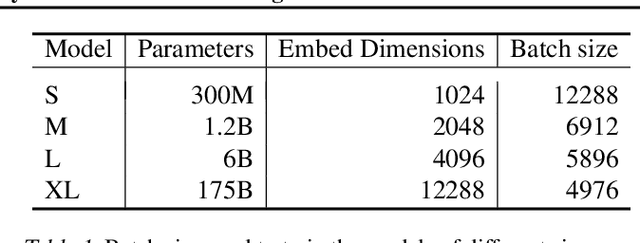
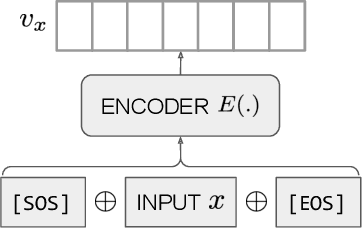
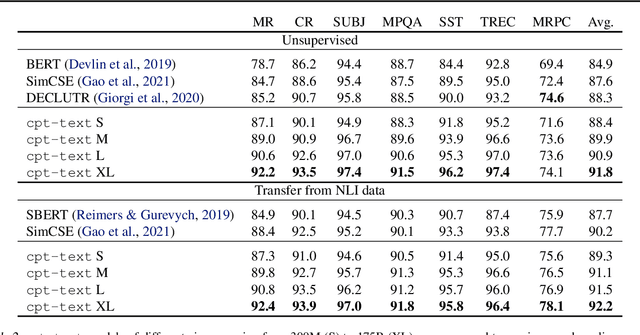
Abstract:Text embeddings are useful features in many applications such as semantic search and computing text similarity. Previous work typically trains models customized for different use cases, varying in dataset choice, training objective and model architecture. In this work, we show that contrastive pre-training on unsupervised data at scale leads to high quality vector representations of text and code. The same unsupervised text embeddings that achieve new state-of-the-art results in linear-probe classification also display impressive semantic search capabilities and sometimes even perform competitively with fine-tuned models. On linear-probe classification accuracy averaging over 7 tasks, our best unsupervised model achieves a relative improvement of 4% and 1.8% over previous best unsupervised and supervised text embedding models respectively. The same text embeddings when evaluated on large-scale semantic search attains a relative improvement of 23.4%, 14.7%, and 10.6% over previous best unsupervised methods on MSMARCO, Natural Questions and TriviaQA benchmarks, respectively. Similarly to text embeddings, we train code embedding models on (text, code) pairs, obtaining a 20.8% relative improvement over prior best work on code search.
WebGPT: Browser-assisted question-answering with human feedback
Dec 17, 2021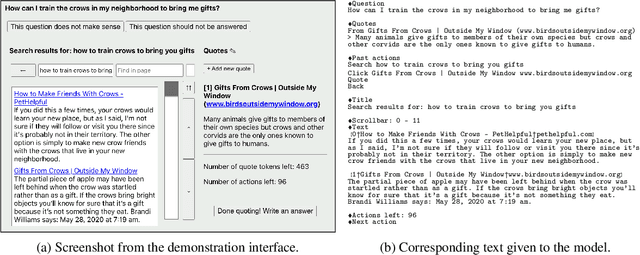

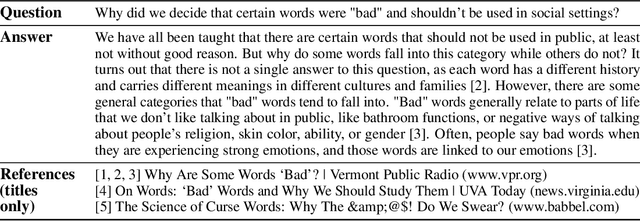
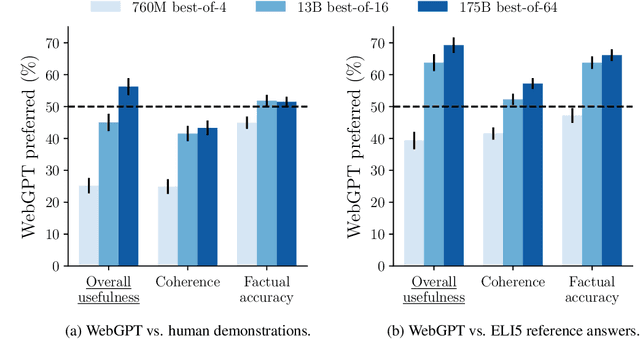
Abstract:We fine-tune GPT-3 to answer long-form questions using a text-based web-browsing environment, which allows the model to search and navigate the web. By setting up the task so that it can be performed by humans, we are able to train models on the task using imitation learning, and then optimize answer quality with human feedback. To make human evaluation of factual accuracy easier, models must collect references while browsing in support of their answers. We train and evaluate our models on ELI5, a dataset of questions asked by Reddit users. Our best model is obtained by fine-tuning GPT-3 using behavior cloning, and then performing rejection sampling against a reward model trained to predict human preferences. This model's answers are preferred by humans 56% of the time to those of our human demonstrators, and 69% of the time to the highest-voted answer from Reddit.
Filling gaps in trustworthy development of AI
Dec 14, 2021Abstract:The range of application of artificial intelligence (AI) is vast, as is the potential for harm. Growing awareness of potential risks from AI systems has spurred action to address those risks, while eroding confidence in AI systems and the organizations that develop them. A 2019 study found over 80 organizations that published and adopted "AI ethics principles'', and more have joined since. But the principles often leave a gap between the "what" and the "how" of trustworthy AI development. Such gaps have enabled questionable or ethically dubious behavior, which casts doubts on the trustworthiness of specific organizations, and the field more broadly. There is thus an urgent need for concrete methods that both enable AI developers to prevent harm and allow them to demonstrate their trustworthiness through verifiable behavior. Below, we explore mechanisms (drawn from arXiv:2004.07213) for creating an ecosystem where AI developers can earn trust - if they are trustworthy. Better assessment of developer trustworthiness could inform user choice, employee actions, investment decisions, legal recourse, and emerging governance regimes.
Evaluating CLIP: Towards Characterization of Broader Capabilities and Downstream Implications
Aug 05, 2021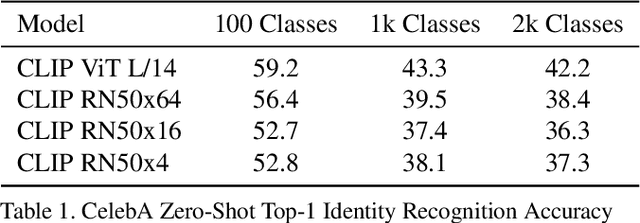
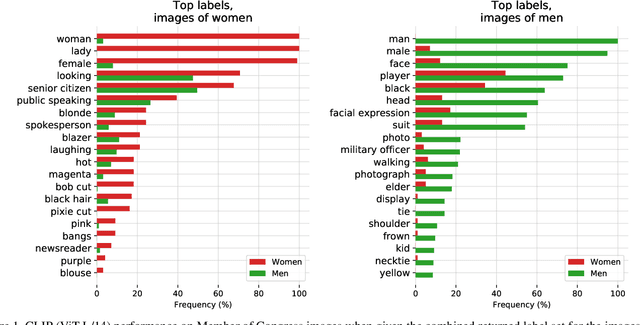


Abstract:Recently, there have been breakthroughs in computer vision ("CV") models that are more generalizable with the advent of models such as CLIP and ALIGN. In this paper, we analyze CLIP and highlight some of the challenges such models pose. CLIP reduces the need for task specific training data, potentially opening up many niche tasks to automation. CLIP also allows its users to flexibly specify image classification classes in natural language, which we find can shift how biases manifest. Additionally, through some preliminary probes we find that CLIP can inherit biases found in prior computer vision systems. Given the wide and unpredictable domain of uses for such models, this raises questions regarding what sufficiently safe behaviour for such systems may look like. These results add evidence to the growing body of work calling for a change in the notion of a 'better' model--to move beyond simply looking at higher accuracy at task-oriented capability evaluations, and towards a broader 'better' that takes into account deployment-critical features such as different use contexts, and people who interact with the model when thinking about model deployment.
Evaluating Large Language Models Trained on Code
Jul 14, 2021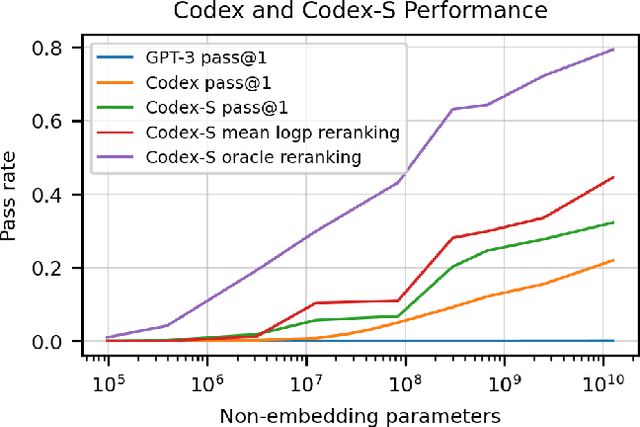
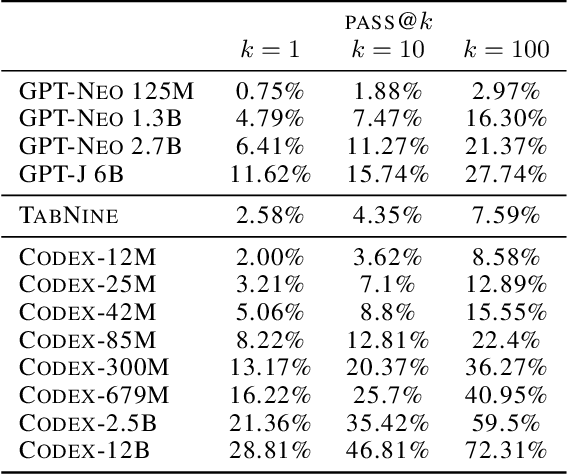
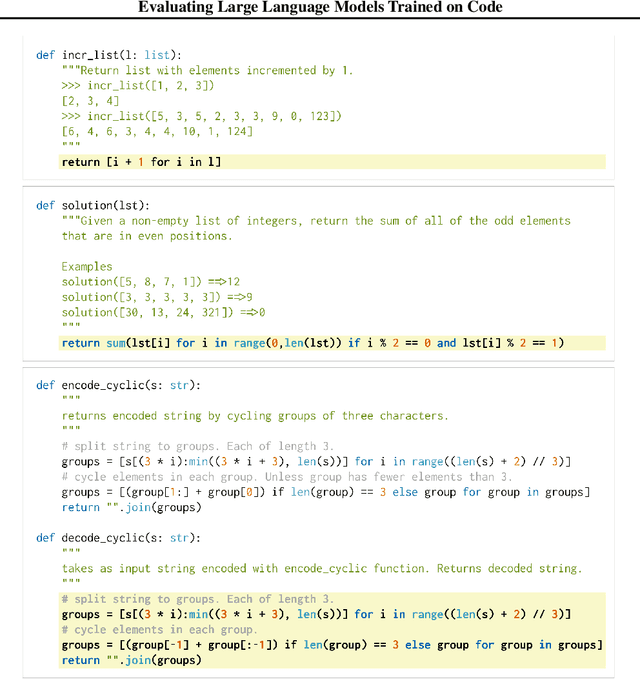

Abstract:We introduce Codex, a GPT language model fine-tuned on publicly available code from GitHub, and study its Python code-writing capabilities. A distinct production version of Codex powers GitHub Copilot. On HumanEval, a new evaluation set we release to measure functional correctness for synthesizing programs from docstrings, our model solves 28.8% of the problems, while GPT-3 solves 0% and GPT-J solves 11.4%. Furthermore, we find that repeated sampling from the model is a surprisingly effective strategy for producing working solutions to difficult prompts. Using this method, we solve 70.2% of our problems with 100 samples per problem. Careful investigation of our model reveals its limitations, including difficulty with docstrings describing long chains of operations and with binding operations to variables. Finally, we discuss the potential broader impacts of deploying powerful code generation technologies, covering safety, security, and economics.
Learning Transferable Visual Models From Natural Language Supervision
Feb 26, 2021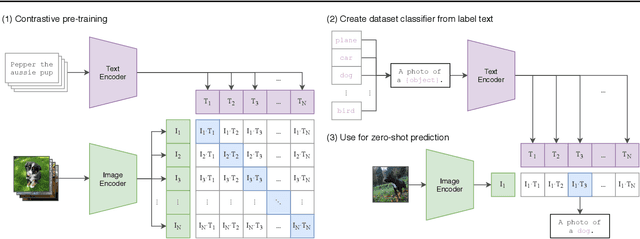

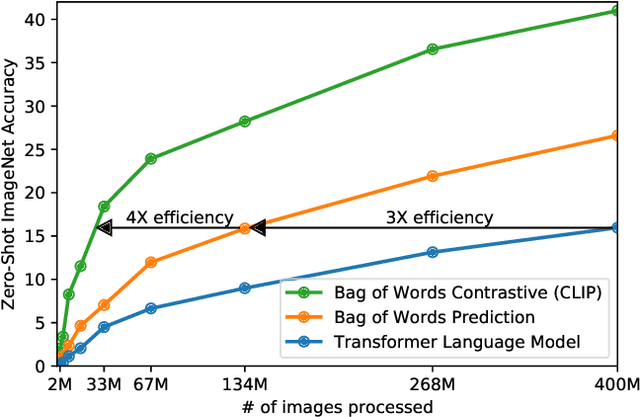

Abstract:State-of-the-art computer vision systems are trained to predict a fixed set of predetermined object categories. This restricted form of supervision limits their generality and usability since additional labeled data is needed to specify any other visual concept. Learning directly from raw text about images is a promising alternative which leverages a much broader source of supervision. We demonstrate that the simple pre-training task of predicting which caption goes with which image is an efficient and scalable way to learn SOTA image representations from scratch on a dataset of 400 million (image, text) pairs collected from the internet. After pre-training, natural language is used to reference learned visual concepts (or describe new ones) enabling zero-shot transfer of the model to downstream tasks. We study the performance of this approach by benchmarking on over 30 different existing computer vision datasets, spanning tasks such as OCR, action recognition in videos, geo-localization, and many types of fine-grained object classification. The model transfers non-trivially to most tasks and is often competitive with a fully supervised baseline without the need for any dataset specific training. For instance, we match the accuracy of the original ResNet-50 on ImageNet zero-shot without needing to use any of the 1.28 million training examples it was trained on. We release our code and pre-trained model weights at https://github.com/OpenAI/CLIP.
Language Models are Few-Shot Learners
Jun 05, 2020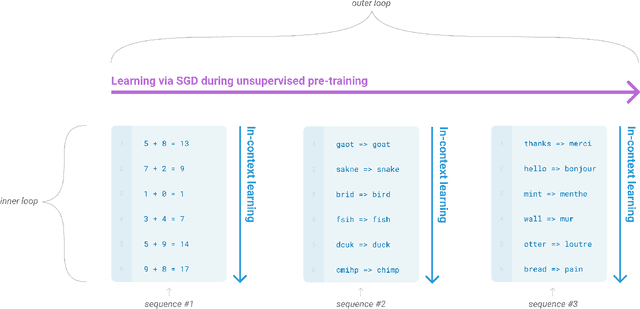
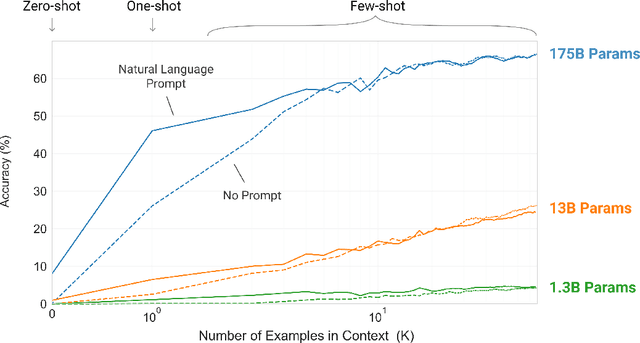
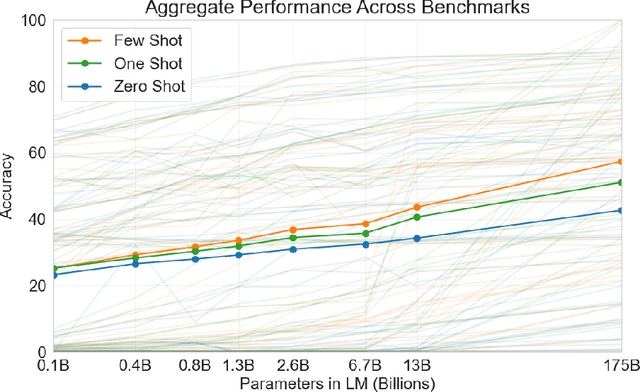
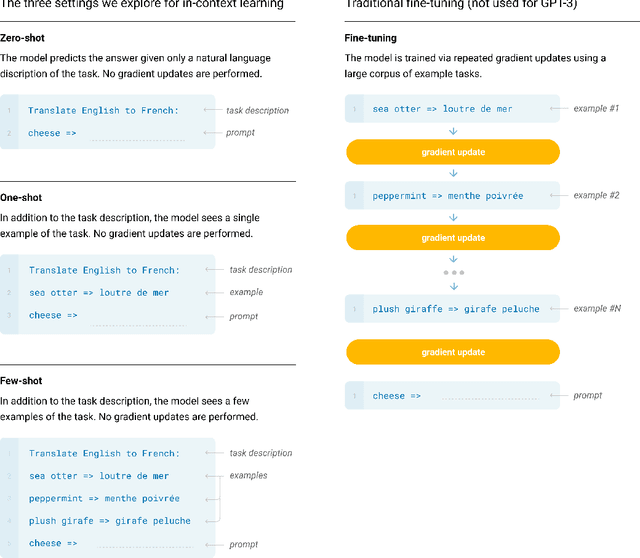
Abstract:Recent work has demonstrated substantial gains on many NLP tasks and benchmarks by pre-training on a large corpus of text followed by fine-tuning on a specific task. While typically task-agnostic in architecture, this method still requires task-specific fine-tuning datasets of thousands or tens of thousands of examples. By contrast, humans can generally perform a new language task from only a few examples or from simple instructions - something which current NLP systems still largely struggle to do. Here we show that scaling up language models greatly improves task-agnostic, few-shot performance, sometimes even reaching competitiveness with prior state-of-the-art fine-tuning approaches. Specifically, we train GPT-3, an autoregressive language model with 175 billion parameters, 10x more than any previous non-sparse language model, and test its performance in the few-shot setting. For all tasks, GPT-3 is applied without any gradient updates or fine-tuning, with tasks and few-shot demonstrations specified purely via text interaction with the model. GPT-3 achieves strong performance on many NLP datasets, including translation, question-answering, and cloze tasks, as well as several tasks that require on-the-fly reasoning or domain adaptation, such as unscrambling words, using a novel word in a sentence, or performing 3-digit arithmetic. At the same time, we also identify some datasets where GPT-3's few-shot learning still struggles, as well as some datasets where GPT-3 faces methodological issues related to training on large web corpora. Finally, we find that GPT-3 can generate samples of news articles which human evaluators have difficulty distinguishing from articles written by humans. We discuss broader societal impacts of this finding and of GPT-3 in general.
 Add to Chrome
Add to Chrome Add to Firefox
Add to Firefox Add to Edge
Add to Edge